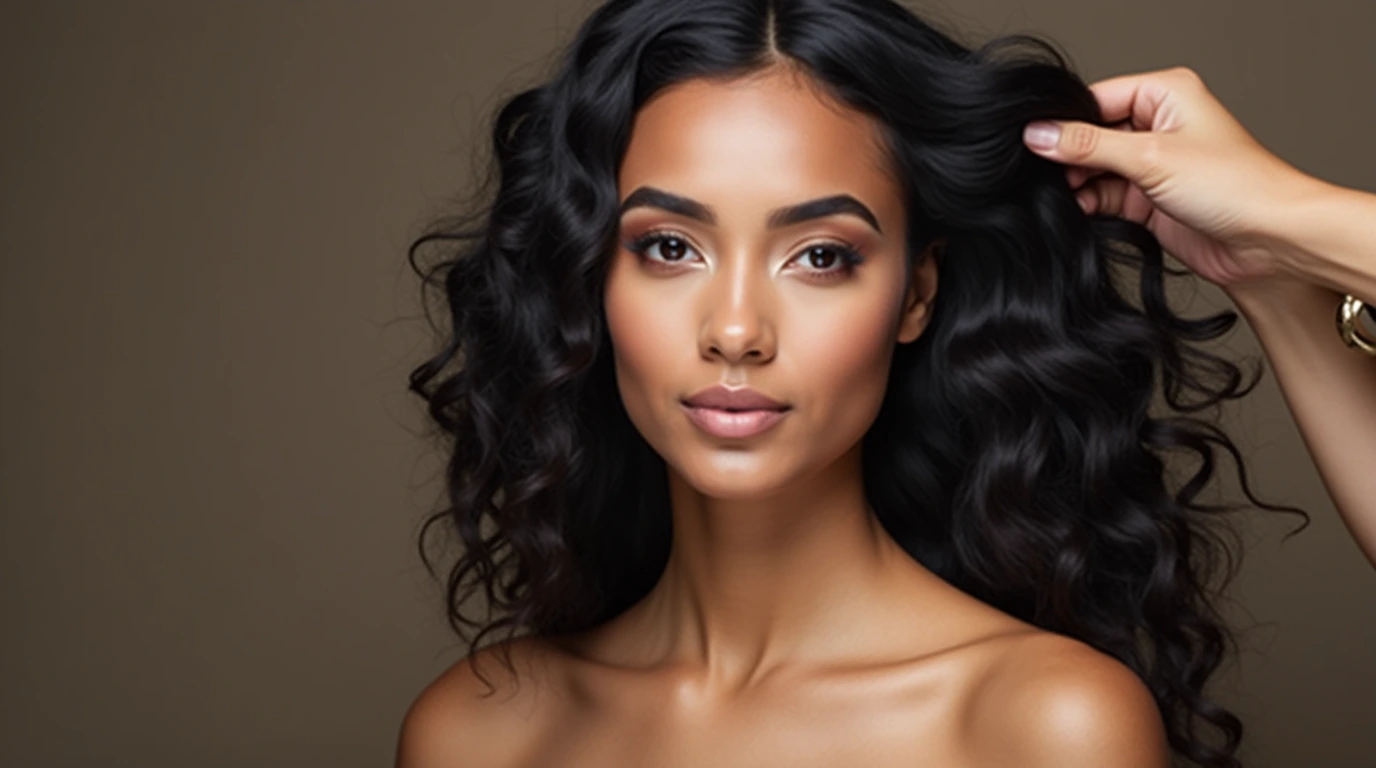DIY Techniques for Installing Weaves
Weaves are a powerful tool in the world of hairstyling, allowing individuals to add length, volume, or texture to their natural hair. Whether you’re aiming for a glamorous, full-bodied look or a subtle enhancement, mastering DIY weave installation techniques can be empowering, economical, and rewarding. Below, we’ll explore essential techniques, tools, and tips for installing weaves at home, along with insights into maintaining healthy natural hair underneath. Dive into the art of weave installations, and discover how you can achieve beautiful, seamless styles.
Key Takeaways
- Proper scalp and hair care before installing a weave is essential to ensure long-lasting results and healthy hair underneath.
- Selecting the right type of weave, like sew-in or clip-in, depends on your styling goals, skill level, and hair type.
- Braiding techniques are crucial for a secure foundation when installing sew-in weaves.
- A high-quality weave installation relies on correct tension, careful blending, and maintenance routines.
- DIY weave installation can save time and money while offering versatility, but it’s essential to understand the techniques for the best results.
1. Understanding Different Weave Types
Weaves come in various forms, each with unique benefits. The most common types are sew-in, clip-in, glue-in, and tape-in weaves. Each type varies in installation method, durability, and ease of application, so choose the one that aligns with your styling preference and experience level.
| Weave Type | Installation Method | Durability | Ideal For |
|---|---|---|---|
| Sew-in | Sewn onto braided base | 6–8 weeks | Long-term styling, low maintenance |
| Clip-in | Clips attach to sections of hair | Daily wear | Temporary styles, quick changes |
| Glue-in | Bonded with adhesive | 2–4 weeks | Bold styles, quick transformations |
| Tape-in | Attached with adhesive tape | 6–8 weeks | Seamless look, fine hair textures |
2. Prepping Natural Hair for Weave Installation
The success of a weave installation largely depends on the health of the natural hair underneath. Begin by thoroughly washing and conditioning your hair to ensure it’s free from buildup. A lightweight leave-in conditioner can be applied to enhance moisture retention. Regular trims, even before weave installation, prevent split ends and make managing natural hair easier.
3. Braiding as the Foundation
The foundation for a secure sew-in or glue-in weave is a well-structured braid pattern. Common braid patterns include straight-back cornrows, circular braids, or beehive braids. For beginners, simpler braids like straight-back cornrows work well. Avoid excessively tight braiding to protect the scalp and hair follicles, which is especially crucial if you’re installing the weave for long-term wear.
4. Choosing the Right Weave for Your Hair Type
When choosing weave hair, consider the texture and thickness of your natural hair. Coarser textures blend well with curly or wavy weaves, while finer hair may blend better with silky straight weaves. Weaves also come in both synthetic and human hair options. While synthetic weaves are budget-friendly and hold styles well, human hair weaves offer a more natural look, with better styling versatility.
5. Sew-In Weave Installation: Step-by-Step Guide
Sew-in weaves are favored for their longevity and natural appearance. To install:
- Start by parting your hair and braiding it into the desired pattern, securing each braid with a small elastic.
- Thread a curved needle with weaving thread, knotting the end.
- Attach the weave by stitching it onto the braids, beginning at the nape of the neck and working your way up.
- Ensure the wefts are securely sewn with each stitch, maintaining an even tension.
- Trim any excess weave, then style as desired.
6. Clip-In Weave Installation: Quick and Easy
Clip-ins are ideal for short-term use or for adding volume and length without a lengthy installation process. Begin by parting your hair horizontally from the nape of your neck and work upward in sections. Attach each clip by snapping it onto the roots of your hair, ensuring a seamless blend. Clip-ins allow for easy removal, making them great for short hair or beginners who want to experiment with different looks.
7. Blending Natural Hair with the Weave

Achieving a seamless look relies on proper blending. For natural hair care and to make your weave appear more authentic, match the texture and color of the weave to your natural hair. Additionally, leave a small section of your natural hair out to cover the weave tracks, particularly around the crown and parting areas. Blending can be improved by gently curling or straightening both your natural hair and the weave together.
8. Securing Your Weave with Adhesives
Glue-in and tape-in weaves offer a lightweight feel but require careful handling. To install a glue-in weave:
- Section hair horizontally and apply a small amount of bonding glue to the weave track.
- Carefully place the weave onto your natural hair, pressing it down for a few seconds until secure.
- For tape-in weaves, peel off the tape backing, sandwiching small sections of your natural hair between two weft pieces.
9. Weave Care Tips to Maintain Quality and Longevity
Proper care is essential to make your weave last while preserving your natural hair underneath:
- Use a sulfate-free shampoo and conditioner, focusing on the weave and scalp.
- Avoid applying heat directly to synthetic weaves, and keep heated tools on low settings for human hair.
- Moisturize your scalp to avoid dryness and prevent itchiness, which can lead to breakage.
10. Removing Your Weave Safely
When it’s time to remove the weave, handle your hair gently. If you’re removing a sew-in weave, carefully cut each thread and slowly unravel the braids. For clip-ins, gently unsnap each clip to avoid tugging. For glued or taped-in weaves, apply a specialized adhesive remover to loosen the bonds. Taking the time to remove the weave carefully will keep your natural hair healthy.
Frequently Asked Questions (FAQs)
1. How long can I leave a weave installed?
The duration depends on the type of weave. Sew-in weaves can last up to 8 weeks, while clip-ins are more temporary, meant for day-to-day use. It’s best to follow recommended timelines to avoid tension on natural hair.
2. Can I install a weave if I have short hair?
Yes, many weave styles are suitable for short hair. Clip-ins and sew-ins work well, and adding texture can create a fuller appearance. Consider weave styles designed for shorter lengths to ensure natural-looking results.
3. How do I maintain the health of my natural hair under a weave?
Moisturize your scalp regularly, wash your hair gently, and avoid overly tight braiding. Using light oils and scalp treatments also helps keep your natural hair and scalp healthy under a weave.
4. What products are safe to use on my weave?
Choose sulfate-free shampoos, conditioners, and lightweight styling products. For synthetic weaves, avoid high heat. Human hair weaves are versatile and can generally handle most styling products when used in moderation.
5. Can I color my weave?
Human hair weaves can be colored, but it’s best to consult with a professional to avoid damage. Synthetic weaves generally cannot be dyed effectively, so it’s advisable to choose pre-colored options if you desire specific shades.
With the right techniques, installing weaves yourself can be an enjoyable and fulfilling way to experiment with your look. Whether you’re adding volume, length, or simply a fresh style, DIY weave installations offer versatility and creativity while giving you control over your hair journey.

